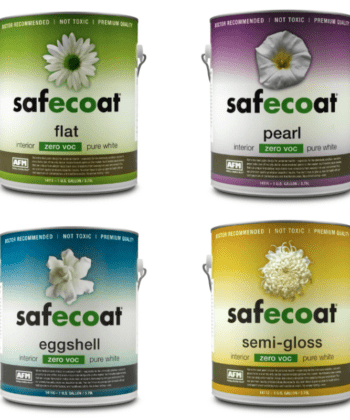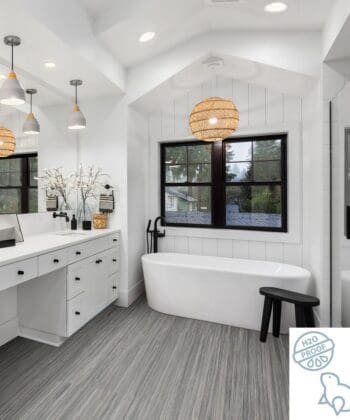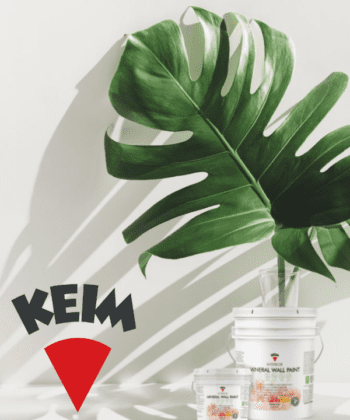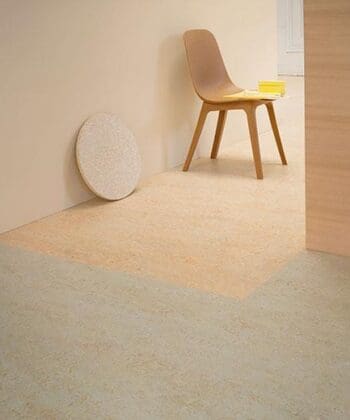Podcast
NTE Podcast: Natural vs Un-Natural
NTE Podcast: Natural vs Un-Natural
If I’m building a home, should I be choosing natural building materials or man-made, synthetic ones? The answer is really not as easy as you think. Remember this…just because something is natural, it doesn’t automatically make it safe for you and your family. Just ask anyone who used to work in the asbestos industry. Jay and I have a great one on one discussion about natural ingredients and natural aromas vs synthetic and odor-less ingredients. Thanks for listening!
iTunes
Spotify
Transcript
Natural vs Un-Natural
Andy Pace:
Welcome to the Non Toxic Environments podcast. My name is Andrew Pace. every week. My cohost Jay Watts and I will discuss healthier home improvement, ideas and options. Thank you for finding us and please enjoy the show. Hello folks. Welcome back to Non Toxic Environments. This is Andy Pace. Jay, we got a fun topic this week. At least I think it’s fun. It’s, it’s very timely because of the holiday. We all just celebrate it.
Jay Watts:
Or it didn’t celebrate it. I don’t think I had, I know I didn’t have any trick-or-treaters this year because of COVID. I just like the neighborhood was dark. Although I saw, I saw some people walking around earlier in the evening, really outrageous costumes, so it wasn’t completely lost, but it was probably a once in a lifetime Halloween experience, but there’s this natural unnatural, spooky, not spooky. All of the things that go along with all the weeds. So let’s talk about how that wraps into what we do.
Andy Pace:
Well, we thought we’d tie it into that. This year, Halloween has been a little strange and whether you participate in it or not, we always have kids from the neighborhood walking around and it’s always fun. It’s fun to see the kids dressed up and they’re all excited, but this year a little difference because we all had to put little gift baskets down in the driveway and you had the kids waving and this wasn’t the same, but you know, it got me thinking, the unnatural and then I got a call today from a client who really had a lot to say about natural wool carpet. It just dawned on me the whole natural versus unnatural discussion is something that you and I have never really gotten into here on the show.
Jay Watts:
We’ve kind of talked around a little bit in context of other things we’ve had as subject matters, but right. To talk about the whole olfactory side let’s dig in so natural and unnatural. So we’ll talk about the wool carpeting.
Andy Pace:
A standpoint of somebody trying to live in a healthy home, there’s this argument that has been going on since boy, since I started in the business years ago, the argument is what is more green. I mean, I’m going to use the term green to make a point. So what is more green, natural wool carpet? The wool fibers are completely synthetic free. They’re not treated with any pesticides or chemical dyes. The backing is hemp, cotton, and bound together using a natural latex, right from the rubber tree when you’re done with the carpet in 70 to a hundred years, because that’s how long this stuff lasts. You can actually grind it up in, in, you know, in and put it into a field and it’ll decompose, right?
Jay Watts:
Cradle to cradle. They call that cradle-to-cradle.
Andy Pace:
That’s one faction. The next the flip of the coin is carpet that you can not only recycle, but is also recycled itself. So what’s called Nylon 66. It’s a recycled nylon fiber from other carpets. They make a new carpet and when you’re done with it, it can be recycled into another carpet. However, it is all done by the, what I call them the magic of chemistry. And there are a lot of synthetic chemicals that go into the process, not only the manufacturing, but just living with the chemical, with the carpet. So when I asked the question, which carpet is more green, it really depends on which side of that green spectrum you’re on which degree of green you focus on.
Jay Watts:
Yup. Yup. So, and when we’re talking about smell, so that I’m assuming that the client that is talking about wool is some, some how concerned about the smell of sheep for a period of time.
Andy Pace:
You’re right. See, this is where the conversation went. She says, I really love the idea of wool carpet. I love the idea of natural chemical free, so on and so forth, synthetic chemical free, but is my house going to smell like a barnyard for the next month because that’s one of the knocks on wool carpet, is that because it’s a natural fiber, it can have sort of an animal smell for a period of time.
Jay Watts:
And how long does that last, is that about a month or is it depends on…
Andy Pace:
I’d say for the most part that that initial strong smell of it lasts about a month, but it can linger. It can come back based upon humidity in the house, which is something we talked about, but the conversation went to, what’s worse that smell or the smell of one of these recycled recyclable, completely chemical laden carpets that they may even add in chemical mascot agents into. Yes, but it still has a smell of new carpet and that we have seen, you know, off gassing tests done on 30 year old carpet, that’s still off gases formaldehyde, right? So are you triggered by a strong aroma? Are you triggered by synthetic chemicals by natural aromas? And it just got me thinking about this whole natural versus unnatural and I’m not sure where this conversation is going to go, Jay, because you know our customer base as well as I do. And you know, that the number one comment we get from customers is that strong odors trigger me. Yes. Well, does it matter if it’s a natural aroma or an unnatural, a synthetic aroma. That’s I mean, that’s a tough question.
Jay Watts:
It’s a tough question to answer. And then the other thing, and I had this week too, where a client called in and they were saying that the smell of the smell of our paint was overwhelming. And yeah. And of course my experience over these many years and years too, because, we both hands-on guys with our products. It’s not like we talk about them, but we don’t know about them when meaning know about the means, we actually use them have installed them, live with them. So when we talk about this, where we’re coming from a real world experience, point of view, and I said, well, you know, I’ve done a lot of painting with my products. And so of course we have to walk through the different things that go on in terms of application and, and environment and the product itself. But what came through to me was there’s a perception, part of this equation and the perception is if it’s got the word “eco” attached to it, or if it’s got the word zero VOC attached to it, that translates to mean no smell, no odor whatsoever.
Jay Watts:
And then when odor is there, it’s overwhelming because the perception was it was supposed to be no, but now it’s got some. And that some is way, way, way, way bad. I mean, this is what the customer was, as you’re saying, this is overwhelming. And I’ve said I’ve used both those products intimately. And, and I wouldn’t say that they’re overwhelming unless these certain things happen. But I think the perception part is an important part of the discussion too, is like people expect something and then, and it’s not what they expect. Then they tend to kind of overreact to it. But natural versus unnatural. So we know that the synthetic chemicals that you just alluded to in carpeting, and it’s consistent with other building materials as well, that off gassing cycle, depending on the chemistry can last last for weeks months. And so then the question becomes, you know, how do you say it? I hate to say it, but pick your poison or don’t pick your poison. You know what I mean?
Andy Pace:
Yeah, I do. The conversation that goes into VOC is yes. We all know that topic, and we talk about it all the time, a volatile organic compound, you generally associate with a strong aroma, but the chemistry of synthetics specifically in building materials allows for the use of chemical mascot agents to hide a lot of these strong aromas. So the perception is there is no smell. Yes. Even though the chemical load is far greater. And to that point, have you have you had a situation where you’ve been able to convince a customer that yes, it does have a strong smell, but that strong smell is completely harmless.
Jay Watts:
That’s a hard one because as soon as, as soon as they smell anything, it sets off all those warnings and bells, right. We have to discuss the background of how we build things, how we make our product line, how we’ve taken the time to study chemical sensitivity and the human health response to chemical exposures. And we have a pretty good sense of what the human body is able to tolerate. Many people are shocked, not shocked, but they’re there. When we tell them, I tell them that a lot of our products have a low amount of VOC in them. In fact, the majority of them have some, it’s kind of like, wait a minute, wait a minute. It’s gotta be zero. It can’t have VOC. I like the analogy you use Andy, which is peel an orange in front of yourself and let that orange, let that aroma, that odor kind of walked up into your face and take a guess on the VOC content of that.
Jay Watts:
And it starts to help them kind of get a sense of what I’m talking about. Right. I also mentioned the idea of hazardous air pollutants and how the hazardous air pollutants are exempt from the VOC regulations. So they can show up, and formulations- they don’t have to be discussed. And so zero VOC could have hazardous air pollutants and the hazardous air pollutants are the ones that are the disruptive part of the disruptive problem, because you get the call. I get the call. The time people are using something they thought was safe, there’ll be a seat. Ooh, I got a problem. It’s been, it’s polluting my place. I can’t be in that space. I’m feeling ill. Why am I feeling ill, zero VOC? I thought it was safe. And we have to go into the discussion. There’s other things that are happening. There’s other chemicals that are in there.
Andy Pace:
So folks, what we’re getting at here is, and this is a one of those greenwashing phrases that we’ve heard forever- “natural.” What it comes down to is just because something is deemed to be natural doesn’t necessarily mean it’s going to have less of an odor and be even less of a hazard or a toxin for you, just because something synthetic doesn’t mean that it can’t be completely harmless and odorless. A lot of manufacturers will throw around these terms, green, natural biodegradable, blah, blah, blah. We know these as greenwashing terms, the natural one is the one that sometimes I, most of the time really gives us the most problems because people hear the word natural and they immediately think safe right now, in the case of something like natural synthetic chemical free wool carpet, is it safe? Uh, there is nothing in it unless you have a specific sensitivity to wool or lanolin in wool that the oil and the skin oil, uh, there is nothing in this product that should be problematic if the FAA aroma of natural wall, because of that sort of that sheep smell that barnyard smell that some people talk about, if that is going to be triggering, then you have to avoid it.
Andy Pace:
I wish there was such an easy cut and dry answer to say, everybody, this product can be great. This product won’t be great, but you really have to take products individually and, and you have to look at them and test them based upon your own sensitivities. Another great example, Jay is, let’s look at Safecoat paints. Safecoat paint, your traditional Safecoat paint is a synthetic acrylic based paint. Happens to be free of HAPS, hazardous ingredients. It happens to be free of chemical off gassing happens to be the same product that’s been made since 1980, that’s helped hundreds of thousands of people worldwide to be able to decorate their homes and live in it. But there’s a faction of people, maybe it’s 5% that can’t tolerate Safecoat. And that’s not surprising. There’s also a large segment of the population who says, I just don’t want to surround myself with plastics in my house if I can get away with it. So you developed the Naturals paint many years ago.
Jay Watts:
Right? We realized what we needed there, that there was that group. You’re speaking to the people who are wanting to stay away from the synthetic quote, unquote, the synthetic petrochemical. We said petrochemical world. And they want to move to something that they feel is more natural, more sustainably sourced, et cetera.
Andy Pace:
And so what’s that, then the question comes from our customers: “well, why should I just use that if it’s just as good, it goes on great and so forth. My whole house is the AFM Naturals. That’s my preferred product of the two. But that all said, why wouldn’t I want to use it? Well, let’s remember the conversation natural versus unnatural. The Safecoat Naturals paint actually contains natural plant oils like linseed oil, right? Linseed oil has a definitive aroma to it. Think of it like woodworking materials or even more so natural linoleum flooring, you know, Marmoleum. If you’ve ever been around Marmoleum, you know that it’s got a very strong linseed oil smell. It is natural. It is non-toxic but linseed oil could be a, a trigger either for allergies, or if you have a strong sensitivity to aromas, be it natural or unnatural, it could actually trigger a response.
Jay Watts:
I think touching on the idea of masking agents is a really a big deal because in my example I made earlier, the client was actually claiming that years ago they used another brand and it didn’t have any smell at all, zero smell. And I thought, well, it’s entirely possible and probably very true that they used a masking agent to hide the smell. So the other thing too, and I’d hate to backtrack a little bit but one of the things that’s happened in certain categories, carpeting’s one of the categories that the industry kind of brainwashing has been, it’s not brainwashing because they don’t do it purposefully. But the whole idea of the new smell, that new smell is, it says new and new is good and new is better.
It’s probably even more an issue with cars. You buy a car and it’s got that new car smell. And if I bought a new car and it didn’t have the new car smell, I would be wondering why not. I get gypped here. Is this really a used car? Or is it a new car? So I think there was a little bit of that going on sometimes in the psychology of understanding these things system, they expect something like this woman, this client expected no smell. Right. And there was a little bit of smell and it was too much smell. It was overwhelmingly of smell. And we talk at the chemically sensitive day in and day out and we know everyone’s reactors are different. And so I didn’t want to play up the idea that maybe she was overreacting.
Jay Watts:
Because I don’t know, maybe it’s true for her. I always have to backdrop it by saying, this is my experience. I happened to be a fairly chemically sensitive person and my wife is too. And so I come from a perspective of being sensitive to the issue. It’s not like, I’m not going to say, Hey, don’t worry about it. Because that’s what happens. Right? A lot of people buy things and the whoever they’re buying it from says, Hey, don’t worry about it. That’s going to go away. It’ll go away in a week. It’ll go away in two weeks. Don’t worry about it. It’ll be okay. I mean, we run into that all the time. Someone’s done something, they bought something and they’ve heard that from whoever the installer was. And then two weeks later they’re crying because I can’t be here. It’s still smells. I talked to a woman today about that with a door. She bought some doors from a reputable manufacturer.
Andy Pace:
That’s the typical go-to phrase from whoever’s doing the installing. Like you said, it’s, Oh, that’ll go away. And once it goes away, it’s, it’s completely harmless. Don’t worry about it really. Or is it just because your olfactory senses are gone and because you’ve been working on this product for so long, you don’t really know… I get calls from clients telling me that their painting contractors walk off the job because they think Safecoat smells more than what they normally use. Well, why do they say that? Because they’re expecting a certain aroma and when they don’t get that aroma to them, that means there’s a bad smell. It’s, it’s a very bizarre situation, but it happens all the time. But you know, when it comes to something like the linseed oil that found in Safecoat, Naturals paint or in natural linoleum.
Andy Pace:
Yeah. I do have to tell people, if you do have a strong sensitivity to aromas, unless you can retrain your brain to understand X except that aroma and know that there is absolutely zero harm in what you are smelling and which is it, which is possible by the way, I mean, you can go through dynamic neural retraining and other methods that actually, you can teach yourself to accept these aromas, but it’s a process. And if you don’t want to go through that process, you just want to avoid the aroma. Sometimes you then have to go to the 100% synthetic version that we know it’s been engineered to not have that smell.
Jay Watts:
When you’re working with your chemical sensitive clients, and you’re proposing materials, what we stress all the time is sampling. I can imagine you’re in a presentation and they’re talking about wool carpeting and you’re saying, okay, well, here’s some wool carpeting I can give you kind of a sense of what we’re talking about. I’m sure that’s a part and parcel of what you do. It has to be right.
Andy Pace:
It is. It is. And then, you know, the question always comes up, well, how big of a sample do I need to get a really good taste of what it’s supposed to be? I can’t answer that. I mean, we provide these samples. What I can tell you is, and it sounds kind of odd, but it works. If you are really concerned about the smell of something, and what it’s going to be like to live with it, and a large scale application. If you get from us little four inch by four inch samples of something before you put it on your nightstand. And which is what we usually say is you do the sniff test and then if you really want to get a better view of it, put it on your nightstand and sleep next to it for a few nights. But before you do that, take a spray bottle of water and just spritz it with water and then put it on your nightstand. Why they ask, it’s pretty sensible to do this because think of enclose your eyes and pretend that you’re smelling a piece of wood. Okay. I’m doing it right now. Nice piece of oak or a piece of pine two by four, smelling it now, spray it with water and smell it again. Oh yeah. It’s going to smell like wood times ten.
Andy Pace:
What happens is, and I’ve mentioned this before is when moisture or humidity in the air settles and gets into a material and then that moisture and that material evaporates back out, when it evaporates back out, it’s going to carry with it the chemical footprint of where it was. So you’re going to smell it more. And that’s why things that are wet, smell more. That’s why a wet, damp basement smells like a really damp basements.
Do this. And you’re actually going to find out that it kind of accelerates the test and you’ll find out faster whether the aroma of that product is going to be problematic, not just the chemical off gassing, if there is any, but the aroma of what you are dealing with.
Jay Watts:
Yes. That’s excellent. The idea that that analogy made me think of, reminds me of being outside after it rains and you can smell, everything’s got this just powerful smell, everything there’s a damp smell, but then wood, if you’ve got a wooden deck or you’ve gotten what outside your home you’re around, it’s really pungent. So that’s a very good way to picture it.
Andy Pace:
So I hope this gives us all a little bit of an insight into that whole natural versus unnatural topic. Just because something is natural does not immediately mean it’s safe for you. Think of asbestos being natural. It is natural. It doesn’t mean it’s safe just because something is synthetic does not mean it’s toxic.
Jay Watts:
Yep. Very, very straightforward. Very straightforward. Okay.
Andy Pace:
So with that folks, if you have any comments, questions, topic ideas, please shoot us a note. You can send me an email, andy@degreeofgreen.com, you can go to our website degreeofgreen.com and leave us a message right on the right on the home page, on our SpeakPipe app. We hope to feature your question on an upcoming episode of the show. And as always, please let your friends and neighbors and family know about the show. Folks, we’ll be with you again next week and enjoy the weather. Want less take care of everyone,
Jay Watts:
Take care.
View Transcript PDF











